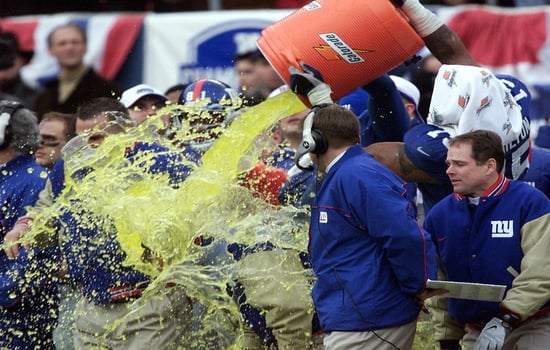
Historical background
Emerging as a sub-species of basketball, netball quickly emerged as a discipline in its own right. As we know, basketball originated in Canada in 1891. thanks to gym teacher James Naismith and quickly gained popularity in the United States. A year later, Senda Berenson, who was chair of the physical education department at the College of Gwinnipeg, was the head of the Department of Physical Education at the University of California, New York. Massachusetts has modified the rules, making the game easier for girls to play. But it wasn't until it hit the UK that the new variety of basketball gained recognition.
Here at Hampstead College in London, lecturer Martina Bergman-Osterberg has changed the rules of discipline somewhat, in particular:
The basket has been replaced with a ring and net.
Playing on grassy areas.
It was in England that the game got its name "netball". It swiftly swept first the UK and then the world, hitting the early 20th c. to Australia and New Zealand.
Since 1960. the discipline is supervised by the International Netball Federation (IFNA). Under its auspices in 1963. the first world championship was organized with the participation of teams from 11 countries. In 1995. the discipline has received Olympic status, but has not yet been included in the Games program, although in 2012. a petition with over 600,000 signatures was sent to the IOC. person. 1998 г. competitions were held as part of the Commonwealth Games and have been held on a regular basis since then.
Rules of netball
The game involves 2 teams, with the number of participants in each team varying from 7 to 12 depending on the country in question. For example, in the United States and the United Kingdom, a team size of 7 is officially authorized. This rule was established in 1956. and in 1960. endorsed by the International Federation. And in Holland, where the game is called korfball, the team members are 12.
Competitions are held on a rectangular grass field with sides of 15.25 x 30.5 meters. which is divided into 3 zones. The net rings, which have the name of gates, have semicircular areas with a radius of 4.9 m marked on them. They are referred to as the "gateway square". The object of the game is to throw the ball into the opponent's goal.
The diameter of the ring is 38 cm and the height of the arrangement is 3.05 m. No shield. A leather or rubber ball is used for the game. It is smaller and lighter than a basketball: the circumference is 68 - 71 cm, and the weight is 397-454 grams.
Each team member plays a strictly defined functional role. There are 7 in total, and they have their own designations that are applied to the players' uniforms as well as a specific area on the court:
Goal Shooter. Located in the opposing team's offensive zone and goal area.
Goal Attack. His area of action is in the center of the field, as well as in the offensive zone and in the opponent's goal area. Only the sniper and the attacker are allowed to make throws.
Wing Attack. Plays in the central zone and offensive area, but may not venture into the opponents' goal area territory.
Centre. Plays a major bonding role. His area of action is the most extensive - he is not prohibited from playing anywhere except in the opponents' goal area.
Wing Defence. Plays in the center of the field and in the defensive zone. Can't be in the goal area.
Goal Defence. Leads the play in the central zone and in the defensive area, including the goal area.
Goal Keeper. Has the right to act in the goal area and in the defensive zone.
Players are only allowed to move within their zones without going beyond their boundaries.
Game progress
A netball game consists of 4 quarters of 15 mins duration. each. The shot is played with a throw. If the ball is grabbed by two players and the referee has difficulty deciding who is right, the referee hits the ball on the ground and on the rebound, the teammates try to catch it again. The ball is then passed between players, with throwing and receiving only when standing up. It is also allowed to catch the projectile in a jump, but here there is a nuance: the leg on which the player lands must remain stationary; if he landed on both, he is allowed to take only 1 step to maintain balance. Only agile girls with good skills are capable of receiving the ball in a jump shot.
Another feature of running a projectile is that it must be touched in every area of the field. That is, directing the ball from zone to zone by throwing is not allowed. A team member may hold the ball for no more than 3 seconds. then pass it to a teammate and do so before he touches the pitch surface again with the foot on which he was resting when receiving the projectile. In other words, moving the ball around the field is prohibited by the rules in order to prevent one player from carrying the ball across the court.
The ball may be thrown and also hit with the hands, but not with the fist. The ball may not be kicked on the ground, except at the point of receiving a projectile, when 1 kick is allowed on the court.
In addition, netball prohibits you from performing the following actions with the projectile:
Roll it.
Kick.
Throw it up and catch it again.
Hold for more than 3 s.
Take away from your opponent.
Defenders can intercept the ball when passing it from the forwards. To that end, they tend to tightly encircle them. In addition, the defender has the right to intercept any ball other than the one thrown into the ring. It is only the goalkeeper who can protect the goal against a goal.
If the ball goes out of bounds, it is re-entered into play.
A goal is when the ball hits the goal, t. е. when the entire projectile passes through the ring. Only the attacker has the right to throw the ball into the ring while in the appropriate zone. A point is awarded to a team for each goal. The side that accumulates the most points during the game is the winner.
Netball provides penalties for breaking the rules:
If a player of the team has done something that is not allowed, a free throw is declared, the goal from which does not count.
An offense committed in the offensive zone shall be penalized to the side on whose side the offense occurred.
Varieties of netball and their features
Another variation of netball is mix netball, which includes teams made up of men and women. In this version of the game, the rules are slightly modified to provide equal opportunity for both genders. In this way, mix netball promotes equality and rapprochement between the sexes.
Another variation of netball is intellectual netball. This version of the game introduces different difficulty levels and strategic elements, making the game more mental and requiring an analytical approach. Intelligent Netball is suitable for those who want to test their ability to solve logical problems and develop tactical thinking skills.
Fast5 (originally called Fastnet) is a variation of netball whose rules were changed to make the game faster and easier to broadcast on television. The Netball World Series promotes this variation to increase the popularity of the sport and attract more spectators and sponsors.
The different varieties of netball allow everyone to find something different in the game. Regardless of the variety chosen, playing netball promotes physical health, team spirit and improved movement coordination.






